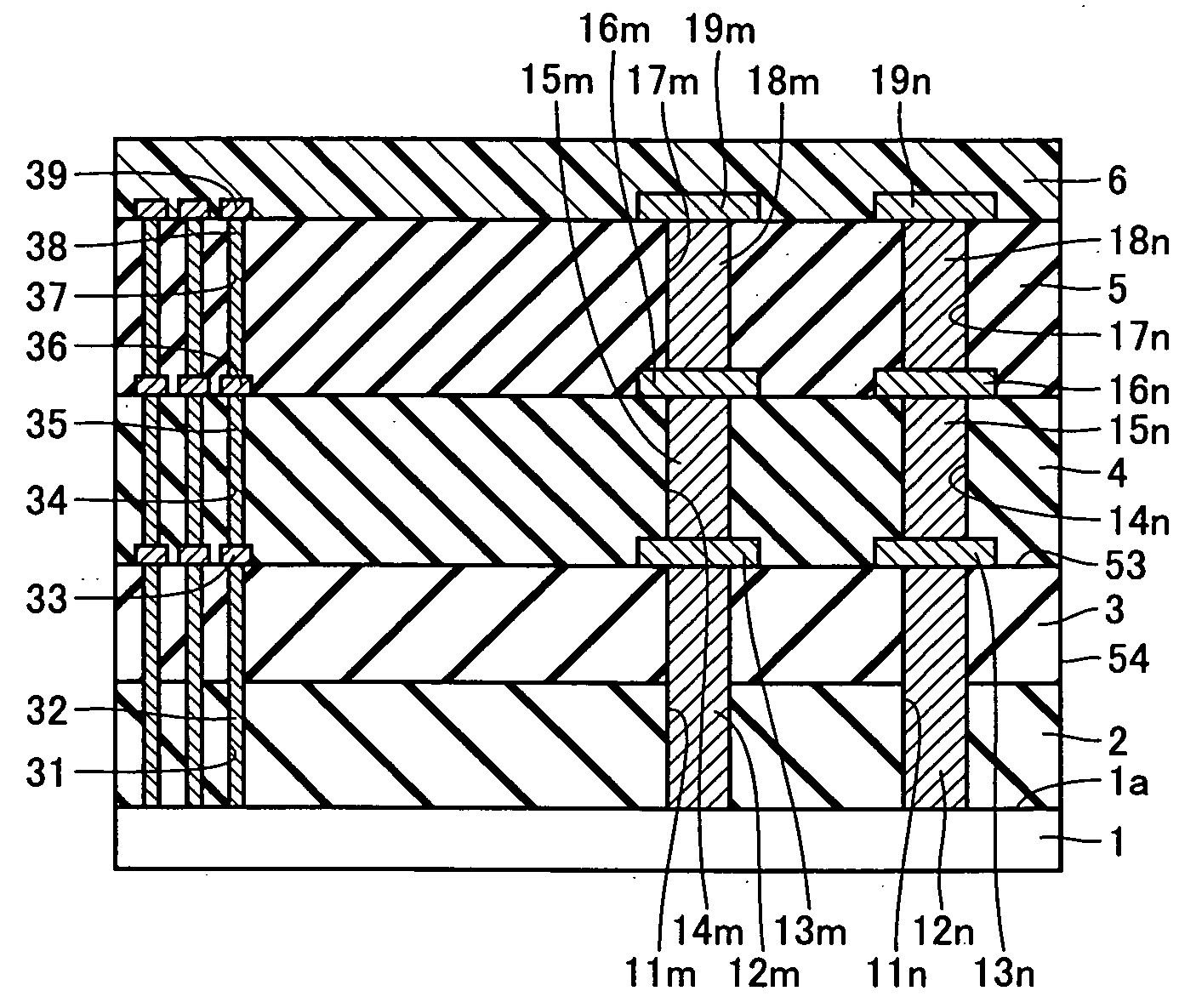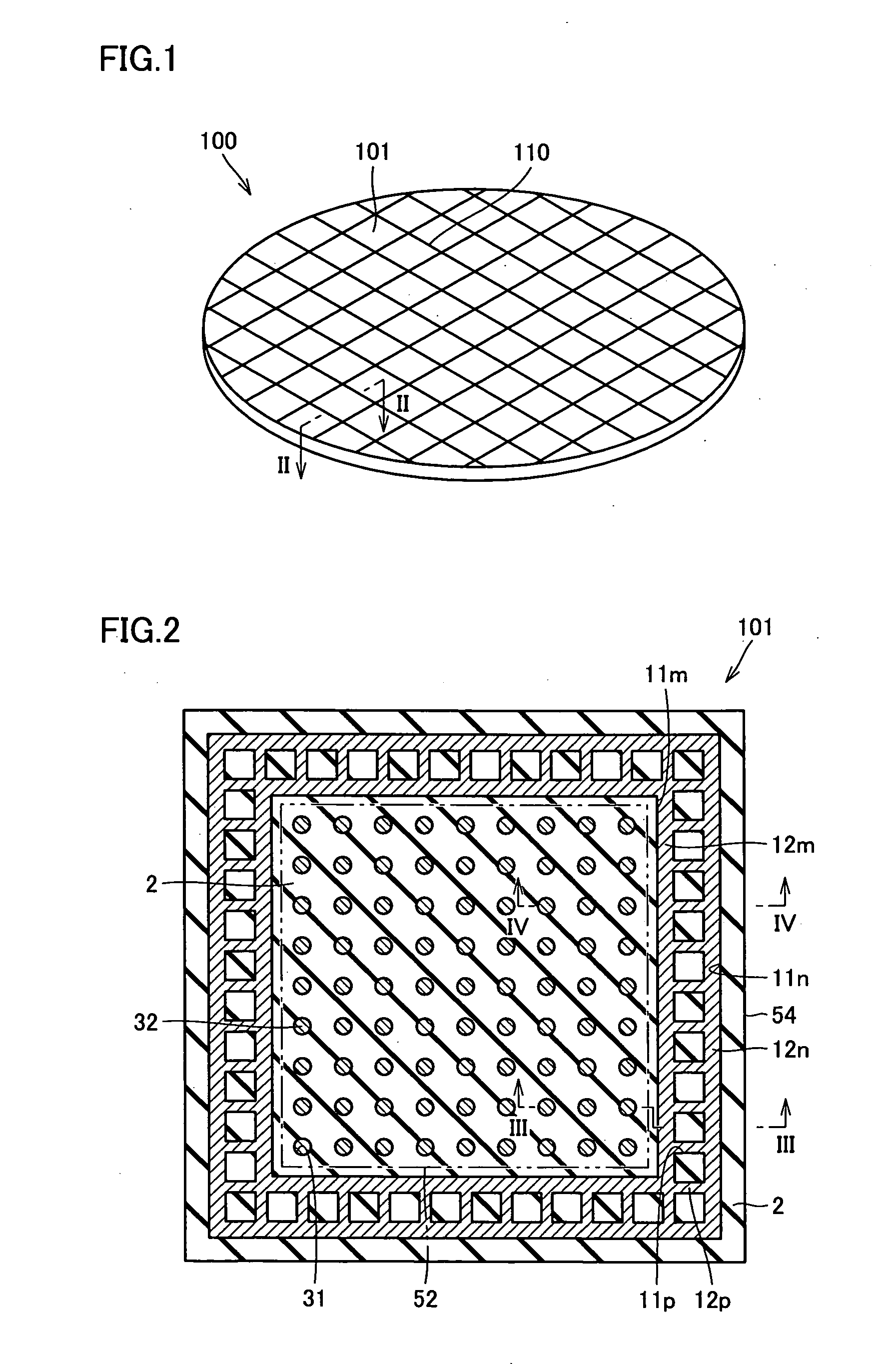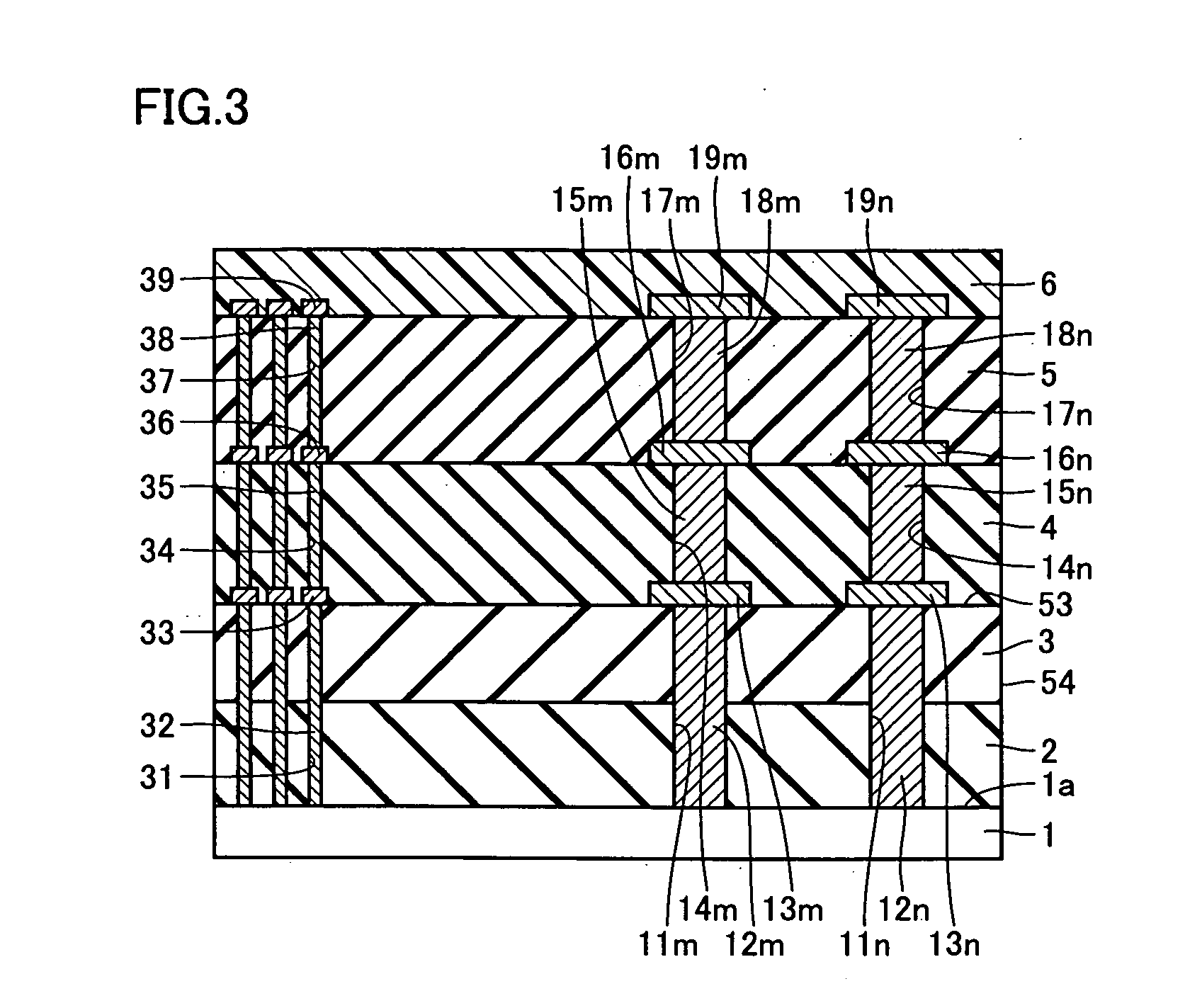Semiconductor device
a technology of semiconductor devices and shielding films, applied in the direction of semiconductor devices, semiconductor/solid-state device details, electrical apparatus, etc., can solve the problems of cracks at the border, protection films can be damaged, and cracks can not be sure to inhibit crack propagation, etc., to achieve high reliability
- Summary
- Abstract
- Description
- Claims
- Application Information
AI Technical Summary
Benefits of technology
Problems solved by technology
Method used
Image
Examples
first embodiment
[0025] Referring to FIG. 1, a semiconductor wafer 100 is formed of a silicon substrate and a semiconductor element formed on the silicon substrate. On the surface of the semiconductor wafer, dicing lines 110 are formed in a grid. Semiconductor wafer 100 is diced along dicing lines 110 using a dicing saw to obtain therefrom a semiconductor device 101 in the form of a chip.
[0026] Referring to FIG. 2, a predetermined cross section of semiconductor device 101 obtained from semiconductor wafer 100 in FIG. 1 is shown. Semiconductor device 101 has a rectangular shape in plan view. A peripheral edge 54, which forms the contour of the rectangular shape, is formed of cut surfaces along dicing lines 110. In a memory cell region surrounded by a double-dotted line 52, a memory cell is formed to serve as a semiconductor element.
[0027] Referring to FIGS. 2 to 4, interlayer insulating films 2 and 3 are successively formed on a main surface la of a silicon substrate 1. Interlayer insulating film 2...
second embodiment
[0052]FIG. 10 shows a configuration corresponding to a cross section shown in FIG. 2 in the first embodiment. A semiconductor device in a second embodiment has basically the same structure as that of the semiconductor device in the first embodiment, except for the shape of the seal ring formed in the interlayer insulating film. Hereinafter, for the similar structure, description thereof will not be repeated.
[0053] Referring to FIG. 10, in interlayer insulating films 2 and 3, grooves 11m and 11n are formed to be placed outside the memory cell region surrounded by double-dotted line 52, and groove 11p is formed to extend in zigzag between grooves 11m and 11n. Groove 11p connects grooves 11m and 11n at each predetermined spacing. Groove 11p extends in a direction diagonal to the extending direction of grooves 11m and 11n connected by groove 11p.
[0054] According to the semiconductor device configured as such, the effect similar to that of the first embodiment can be obtained. Furtherm...
third embodiment
[0055]FIG. 11 shows a configuration corresponding to a cross section shown in FIG. 2 in the first embodiment. A semiconductor device in a third embodiment has basically the same structure as that of the semiconductor device in the first embodiment, except for the shape of the seal ring formed in the interlayer insulating film. Hereinafter, for the similar structure, description thereof will not be repeated.
[0056] Referring to FIG. 11, in interlayer insulating films 2 and 3, grooves 11m and 11n are formed to be placed outside the memory cell region surrounded by double-dotted line 52, and a plurality of grooves 11p are formed to be placed between grooves 11m and 11n and to extend in a direction orthogonal to the extending direction of grooves 11m and 11n. Grooves 11p protrude from both grooves 11m and 11n, and grooves 11p protruding from one of the grooves extend toward the other groove. Grooves 11p protrude from both grooves 11m and 11n alternately at a predetermined spacing with e...
PUM
 Login to View More
Login to View More Abstract
Description
Claims
Application Information
 Login to View More
Login to View More - R&D
- Intellectual Property
- Life Sciences
- Materials
- Tech Scout
- Unparalleled Data Quality
- Higher Quality Content
- 60% Fewer Hallucinations
Browse by: Latest US Patents, China's latest patents, Technical Efficacy Thesaurus, Application Domain, Technology Topic, Popular Technical Reports.
© 2025 PatSnap. All rights reserved.Legal|Privacy policy|Modern Slavery Act Transparency Statement|Sitemap|About US| Contact US: help@patsnap.com



